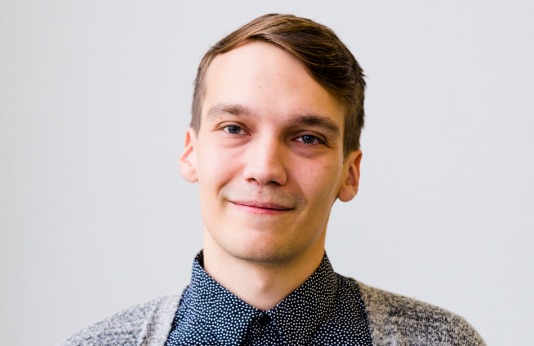Especially in Europe, it's easy to take healthcare for granted. But half the world lives without access to even the most basic forms of healthcare. Together with Roche, we're working to change that.
Healthcare is a human right – yet inaccessible to many
If you’re reading this, you’re on the internet, which is a basic indicator of your socioeconomic status. Chances are you also have access to some form of healthcare – whether private or public, occasional or continuous. But for half the world (incidentally, roughly the same half that doesn’t have access to the internet), access to healthcare is completely out of reach. The World Bank and WHO estimate that 50% of the world’s people live without access to basic healthcare of any kind. Moreover, the costs of receiving healthcare can often be overwhelming; the World Bank estimates that over 100 million people are forced into poverty every year due to unmanageable expenses for healthcare.
As a pharmaceutical company, Roche is in the business of selling medicine. Roche’s treatments have changed countless lives since its establishment over 125 years ago. They want to enable people to be healthy and to receive high-quality healthcare, from its most basic forms to cutting-edge treatment paths and therapies. Roche is present in most countries across the world, but in many of those countries there are significant obstacles to people receiving the healthcare they need. Roche wants to play a part in solving that – and they chose Vertical as their key partner to achieve this.
Taking a hands-on approach to the challenge
Macro-level challenges such as access to healthcare are normally taken on by large-scale charities, foundations, and nongovernmental organizations, and solving these challenges becomes their sole purpose. Private companies are generally content to support different initiatives through donations or other means, while continuing to focus on their own core business.
Roche, however, wanted to take a different approach, believing that direct involvement and hands-on activities would be most effective in finding solutions. It was clear, however, that a challenge of such magnitude and complexity could not be solved by one party alone.
Enter the ecosystem
Together with local Roche Affiliates, Vertical utilised design thinking and open innovation methodologies to build local ecosystems of stakeholders, including hospitals, patient advocacy groups, and government bodies, all with the aim of identifying and solving the unique challenges their healthcare systems faced. The program, Access for Future (A4F for short), was officially kicked off in 2020, and is soon launching pilot projects of solutions addressing access to healthcare challenges for millions of people across India, Thailand, and Egypt.
While Roche and Vertical have put the whole program together, our true aim is to enable the different organizations within these local ecosystems to bring their best strengths to solve these problems in a multi-party way. What challenges do the different stakeholders have that are mutual, and what are mutually beneficial ways of solving those challenges?
Go where the challenge is the greatest
The challenge of lack of access to healthcare is most prevalent in countries with high populations and low incomes. As a country’s population scales, so does their need for healthcare. Low-income countries struggle to provide healthcare to their large populations because the resources which fund initiatives such as public healthcare are derived from taxes, which aren’t generated in excess when salaries are low. Even without a public healthcare system, low salaries also lead to patients being unable to pay for healthcare out of pocket without risk of bankruptcy.
This dynamic of high demand and low resources results in a lack of space and facilities at hospitals, limited resources for educating frontline healthcare workers, overworked doctors, and long waiting times. The Covid-19 pandemic added stress to these healthcare systems, as the demand for treatment grew to include those needing care for coronavirus related illness. While many hospitals are digitalising and transferring data to electronic systems, the process is slow and will often take many years to complete, leaving healthcare professionals with complicated processes and challenging ways of working.
Impact on the ground
In India, we took on the challenge of upskilling frontline healthcare providers for early diagnosis and appropriate referral in cancer care. The solution is aimed at empowering these frontline workers with support in decision making and the appointment of appropriate care paths, and is projected to significantly increase early cancer diagnosis and understanding of how referrals lead to results. The solution is forecast to:
- Speed up access to a correct diagnosis for up to 11 million patients, and in the future up to 204 million patients in the state of Uttar Pradesh alone
- Increase referral and triage assessment accuracy through AI-boosted screening, with the selected solution providing an accuracy rate of 91.3% and growing
In Thailand, the pilots are exploring how remote monitoring of patients being treated for various diseases has an effect on both patient experience and doctor efficiency. The pilots are being run in several hospitals across Thailand, with spinal muscular atrophy (SMA) and breast cancer patients being monitored over a nine-month period. The pilot is designed to help hospitals increase their touchpoints with patients, gather patient well-being data between appointments, and decrease the need for paper forms. The solution is forecast to:
- Reduce time spent on patient-reported outcome measures from 75 minutes to 15 minutes per patient per year in Siriraj and Ramathibodi hospitals, which see nearly 5 million patients annually
- Reduce these hospitals’ time used in follow-up calls by 50%
If you want to learn more about the process for selecting these challenges and solutions, check out the Roche A4F Ecosystem Building case study.
Conclusion
If, through its work with many parties in the healthcare value chain, the Access for Future Movement lowers the access barrier to treatment, that will also mean removing some unnecessary costs related to the treatment. Depending on the healthcare system, this will result in savings for the hospital and public healthcare scheme or for patients themselves. That makes the treatment more accessible, so more people can receive it, which means more business for the ecosystem. And a longer, healthier life for the patients.
Addressing the complex issue of increasing access to healthcare is a challenge which won’t be solved entirely by one initiative. However, through our work with Roche we hope to have inspired and equipped local Roche Affiliates, hospitals, startups, and even patients to start viewing such issues as solvable, and give them the tools to continue to build ecosystems which have the ability to make a difference.

